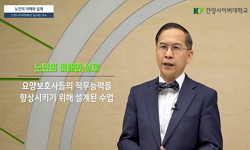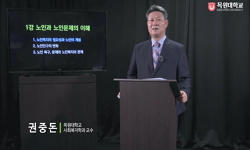Cognitive decline and dementia in the elderly are major chronic disorders that cause disability worldwide, while also lead to the transition from communities to nursing facilities. Considering the aging trend in Korea, the national burden of diseases ...
http://chineseinput.net/에서 pinyin(병음)방식으로 중국어를 변환할 수 있습니다.
변환된 중국어를 복사하여 사용하시면 됩니다.
- 中文 을 입력하시려면 zhongwen을 입력하시고 space를누르시면됩니다.
- 北京 을 입력하시려면 beijing을 입력하시고 space를 누르시면 됩니다.
https://www.riss.kr/link?id=T15299862
- 저자
-
발행사항
서울 : 연세대학교 보건대학원, 2019
-
학위논문사항
학위논문(석사) -- 연세대학교 보건대학원 , 보건정책학과 보건정책관리전공 , 2019.8
-
발행연도
2019
-
작성언어
한국어
- 주제어
-
발행국(도시)
서울
-
기타서명
Association between handgrip strength and cognitive function in the elderly : Korean longitudinal study of aging (2006-2016)
-
형태사항
vi, 81장 : 삽화 ; 26 cm
-
일반주기명
지도교수: 정우진
-
UCI식별코드
I804:11046-000000520075
- 소장기관
-
0
상세조회 -
0
다운로드
부가정보
다국어 초록 (Multilingual Abstract)
disorders that cause disability worldwide, while also lead to the
transition from communities to nursing facilities. Considering the
aging trend in Korea, the national burden of diseases due to
cognitive decline and dementia is expected to increase greatly in the
future. As a physical function, handgrip strength has been associated
with limitations of everyday ability, subjective health, frailty, and
mortality. Studies have been continuously reported that handgrip
strength is related to cognitive function, but there is a lack of study
on the association between handgrip strength and cognitive function
based on data from South Korea. This study aimed to identify the
association between baseline handgrip strength and cognitive function
in the elderly.
This study used the data from 1st to 6th Korean Longitudinal
Study of Aging(KLoSA). The study participants were 1,738 elderly
persons aged over 65 who participated in the survey more than once
and did not show cognitive impairment in the 1st survey. Variables
that are expected to be related to cognitive function were selected
and analyzed including socio-demographic factors and health-related
factors. Taking into account differences in handgrip strength by sex,
the analysis was performed separately by sex. Descriptive analysis,
univariable analysis that reflects survey characteristics including
t-test, analysis of variance, simple regression analysis, and
multivariable analysis using linear mixed model were performed.
Of the 1,738 participants, 984 were male and 754 were female. In
the model with adjustment of all covariates, handgrip strength and
cognitive function show significant association in male (β=0.03,
SE=0.01, p<0.001). Low cognitive function is associated with
progress of survey year, rural residence, and depressive symptoms
in male. High cognitive function is associated with high educational
attainment, currently working status, and exercise at least once a
week in male. Handgrip strength and cognitive function also show
significant association in female (β=0.05, SE=0.02, p=0.004). Low
cognitive function is associated with progress of survey year, rural
residence, and depressive symptoms. High cognitive function is
associated with high educational attainment and exercise at least
once a week.
The results reveal a significant association between baseline
handgrip strength and cognitive function in the elderly. The handgrip
strength is not only an easily applicable method of measurement, but
also an indicator that reflects a significant association with cognitive
function. It is expected that this method can be used as a useful tool
in terms of enhancing the treatment appropriateness of individual and
reducing the national burden of diseases by promoting further
screening tests and appropriate therapeutic interventions in a timely
manner.
Cognitive decline and dementia in the elderly are major chronic
disorders that cause disability worldwide, while also lead to the
transition from communities to nursing facilities. Considering the
aging trend in Korea, the national burden of diseases due to
cognitive decline and dementia is expected to increase greatly in the
future. As a physical function, handgrip strength has been associated
with limitations of everyday ability, subjective health, frailty, and
mortality. Studies have been continuously reported that handgrip
strength is related to cognitive function, but there is a lack of study
on the association between handgrip strength and cognitive function
based on data from South Korea. This study aimed to identify the
association between baseline handgrip strength and cognitive function
in the elderly.
This study used the data from 1st to 6th Korean Longitudinal
Study of Aging(KLoSA). The study participants were 1,738 elderly
persons aged over 65 who participated in the survey more than once
and did not show cognitive impairment in the 1st survey. Variables
that are expected to be related to cognitive function were selected
and analyzed including socio-demographic factors and health-related
factors. Taking into account differences in handgrip strength by sex,
the analysis was performed separately by sex. Descriptive analysis,
univariable analysis that reflects survey characteristics including
t-test, analysis of variance, simple regression analysis, and
multivariable analysis using linear mixed model were performed.
Of the 1,738 participants, 984 were male and 754 were female. In
the model with adjustment of all covariates, handgrip strength and
cognitive function show significant association in male (β=0.03,
SE=0.01, p<0.001). Low cognitive function is associated with
progress of survey year, rural residence, and depressive symptoms
in male. High cognitive function is associated with high educational
attainment, currently working status, and exercise at least once a
week in male. Handgrip strength and cognitive function also show
significant association in female (β=0.05, SE=0.02, p=0.004). Low
cognitive function is associated with progress of survey year, rural
residence, and depressive symptoms. High cognitive function is
associated with high educational attainment and exercise at least
once a week.
The results reveal a significant association between baseline
handgrip strength and cognitive function in the elderly. The handgrip
strength is not only an easily applicable method of measurement, but
also an indicator that reflects a significant association with cognitive
function. It is expected that this method can be used as a useful tool
in terms of enhancing the treatment appropriateness of individual and
reducing the national burden of diseases by promoting further
screening tests and appropriate therapeutic interventions in a timely
manner.
국문 초록 (Abstract)
본 연구는 1차-6차 고령화연구패널조사(2006-2016) 자료를 이용하여, 2회 이상 조사에 참여하고 1차 조사 당시 인지기능 저하 의심 소견이 없는 만 65세 이상의 노인 1,738명을 대상으로 하였다. 인구사회적 요인과, 1차 조사에서의 기초선 악력을 포함한 건강관련 요인으로 구분해 인지기능과 연관성이 추정되는 변수를 선정해 분석하였다. 성별에 따른 악력의 차이를 고려해 성별에 따른 분석으로 분석하였고, 기술 분석 및 단변수 분석으로 survey 특성을 반영한 t-검정, 분산 분석, 단순 회귀 분석과 다변수 분석으로 선형 혼합 모형 분석을 시행하였다.
전체 연구대상자 1,738명 중 남성은 984명, 여성은 754명이었으며, 모든 변수를 보정한 모형에서, 남성에서는 기초선 악력이 높을수록 인지기능이 유의하게 높은 연관성을 보였다(β=0.03, SE=0.01, p<0.001). 인구사회적 요인에서 조사년도가 거듭되는 경우, 지방에 거주하는 경우와 건강관련 요인에서 우울 증상이 있는 경우 인지기능이 유의하게 낮은 연관성을 보였고, 인구사회적 요인에서 교육수준이 높은 경우, 현재 경제활동을 유지중인 경우와 건강관련 요인에서 1주에 1회 이상 신체활동을 하는 경우에서 인지기능이 유의하게 높은 연관성을 보였다. 여성에서는 기초선 악력이 높을수록 인지기능이 유의하게 높은 연관성을 보였고(β=0.05, SE=0.02, p=0.004), 인구사회적 요인에서 조사년도가 거듭되는 경우, 지방에 거주하는 경우와 건강관련 요인에서 우울 증상이 있는 경우 인지기능이 유의하게 낮은 연관성을 보였으며, 인구사회적 요인에서 교육수준이 높은 경우와 건강관련 요인에서 1주에 1회 이상 신체활동을 하는 경우 인지기능이 유의하게 높은 연관성을 보였다.
본 연구는 인지기능 저하 소견이 없는 만 65세 이상 노인을 대상으로 10년간 추적 관찰하여 인구사회적 요인, 건강 관련 요인을 모두 보정해 성별에 따른 기초선 악력과 인지기능의 연관성을 분석한 연구로, 남녀 모두에서 기초선 악력과 인지기능의 유의한 연관성을 확인하였다. 노인의 악력은 쉽게 측정할 수 있는 방법일 뿐 아니라, 인지기능과 유의한 연관성을 반영하는 지표로서 그 중요성이 있다. 그러므로 이를 적용해 추가적인 선별 검사와 각 시기에 맞는 치료적 개입이 조기에 적절하게 이루어질 수 있도록 하여, 개인의 치료 적절성을 제고하고, 국가적 질병 부담을 감소시키는 측면에서도 유용한 근거 자료로 활용할 수 있을 것으로 기대된다.
노인의 인지기능 저하와 치매는 전 세계적으로 노인에서 장애를 유발하는 만성질환인 동시에 지역사회에서 요양기관으로 이행하게 하는 주요 원인이다. 국내에서도 고령화 추세를 고려하...
노인의 인지기능 저하와 치매는 전 세계적으로 노인에서 장애를 유발하는 만성질환인 동시에 지역사회에서 요양기관으로 이행하게 하는 주요 원인이다. 국내에서도 고령화 추세를 고려하였을 때 향후 인지기능 저하와 치매로 인한 국가적 질병 부담이 크게 증가할 것으로 예상된다. 노인의 신체기능 저하도 인지기능 저하와 더불어 노인에서 중대한 문제로 여겨지고 있으며, 그 중 악력은 일상생활 능력의 제한, 주관적 건강, 허약성 및 사망률과도 연관되어 있다. 또한 악력이 인지기능과 관련이 있다는 연구들이 지속적으로 보고되고 있으나, 악력과 인지기능의 연관성에 대해 진행된 국내 연구는 아직 부족한 실정이다. 따라서 본 연구는 노인의 악력과 인지기능의 연관성을 확인하고자 하였다.
본 연구는 1차-6차 고령화연구패널조사(2006-2016) 자료를 이용하여, 2회 이상 조사에 참여하고 1차 조사 당시 인지기능 저하 의심 소견이 없는 만 65세 이상의 노인 1,738명을 대상으로 하였다. 인구사회적 요인과, 1차 조사에서의 기초선 악력을 포함한 건강관련 요인으로 구분해 인지기능과 연관성이 추정되는 변수를 선정해 분석하였다. 성별에 따른 악력의 차이를 고려해 성별에 따른 분석으로 분석하였고, 기술 분석 및 단변수 분석으로 survey 특성을 반영한 t-검정, 분산 분석, 단순 회귀 분석과 다변수 분석으로 선형 혼합 모형 분석을 시행하였다.
전체 연구대상자 1,738명 중 남성은 984명, 여성은 754명이었으며, 모든 변수를 보정한 모형에서, 남성에서는 기초선 악력이 높을수록 인지기능이 유의하게 높은 연관성을 보였다(β=0.03, SE=0.01, p<0.001). 인구사회적 요인에서 조사년도가 거듭되는 경우, 지방에 거주하는 경우와 건강관련 요인에서 우울 증상이 있는 경우 인지기능이 유의하게 낮은 연관성을 보였고, 인구사회적 요인에서 교육수준이 높은 경우, 현재 경제활동을 유지중인 경우와 건강관련 요인에서 1주에 1회 이상 신체활동을 하는 경우에서 인지기능이 유의하게 높은 연관성을 보였다. 여성에서는 기초선 악력이 높을수록 인지기능이 유의하게 높은 연관성을 보였고(β=0.05, SE=0.02, p=0.004), 인구사회적 요인에서 조사년도가 거듭되는 경우, 지방에 거주하는 경우와 건강관련 요인에서 우울 증상이 있는 경우 인지기능이 유의하게 낮은 연관성을 보였으며, 인구사회적 요인에서 교육수준이 높은 경우와 건강관련 요인에서 1주에 1회 이상 신체활동을 하는 경우 인지기능이 유의하게 높은 연관성을 보였다.
본 연구는 인지기능 저하 소견이 없는 만 65세 이상 노인을 대상으로 10년간 추적 관찰하여 인구사회적 요인, 건강 관련 요인을 모두 보정해 성별에 따른 기초선 악력과 인지기능의 연관성을 분석한 연구로, 남녀 모두에서 기초선 악력과 인지기능의 유의한 연관성을 확인하였다. 노인의 악력은 쉽게 측정할 수 있는 방법일 뿐 아니라, 인지기능과 유의한 연관성을 반영하는 지표로서 그 중요성이 있다. 그러므로 이를 적용해 추가적인 선별 검사와 각 시기에 맞는 치료적 개입이 조기에 적절하게 이루어질 수 있도록 하여, 개인의 치료 적절성을 제고하고, 국가적 질병 부담을 감소시키는 측면에서도 유용한 근거 자료로 활용할 수 있을 것으로 기대된다.












